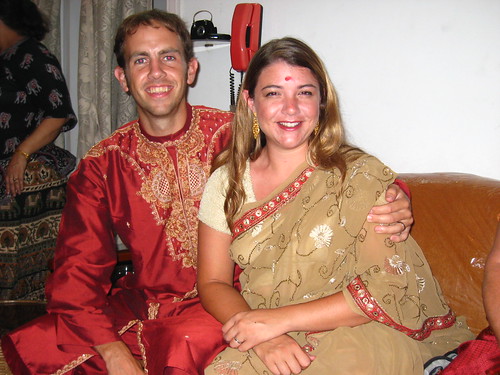I wrote when I was in India a post called Indian Economics where I tried to put in prospective the amount of money that Indian make versus the US. I thought a followup might be in order discussing what we have found in Thailand.
Going back to the same list of GDP per capita, we find that Thailand currently is at $9,193 versus India at $3,802 and the US at $43,223. So, for the purposes of this article I will say that the average Thai makes 1/5 as much as the average American and twice as much as the average Indian. I have not done as much word of mouth research to validate these assumptions, but I do believe that they are more of less true.
With these facts in mind I will say that I am very surprised how much closer the standard of living feels in Thailand to the US then it does to India. When you walk around a Thai city or town, things do not seem that different from home. Most streets are well kept and have a mixture of little shops and restaurants as well as fast food and 7-Eleven chain outlets. Streets are well kept and usually have good sidewalks. People mostly dress in normal, clean western cloths. When you are in the outskirts of a city you see a lot of giant new Tesco superstores (similar looking from the outside to a Wall-Mart, except bigger) and fancy new gas stations.
The most drastic differences I notice off hand are in transportation and street food/shopping. The mix of vehicles here is very heavy with small motorbikes. There are plenty of private cars, but there are also swarms of these little bikes everywhere, being driven by young men, grandmothers, Thai schoolgirls, etc. Also, there are a lot more regular buses and many converted pickup truck buses, or Songthaews. As for street shopping, food carts are everywhere, selling cheap Thai food staples. Also, a lot of shopping for clothes and other goods is done in large areas of small stalls that are present in any large town or city.
The end result is that it seems like Thai life is not that different from the US, but just with a lot of components being done in a cheaper way. A Thai mother still goes out to the store, but it is usually on a motorbike and often to a rustic vegetable market. Thais eat out a lot, but they only spend 20 Baht (75 cents) at a soup stand rather then $10 at Chilies. Thai teens still spend a lot of time shopping, but rather then for name brand goods at a mall, it is for counterfeit goods at a outdoor market, and they ride in a Songthaew to get there. Long haul transportation is usually done by nice tour bus, rather then private car. From what I have seen on the outside, Thais usually live in much smaller houses, but they are usually well kept.
The thing that also makes life seem similar is how a lot of the Thai ways of doing things are a lot cheaper, but are actually on the surface as good as the US version. When we stopped on our 10 hour bus ride at a rest stop to eat it was a brand new open air market place with nice tables and chairs and a array of little counters with the usual soup and curry mix. My soup and Diet Coke cost be 40 Baht (a little over a dollar) but I would take it over a McDonald's value meal any day of the week. A ride in a Songthaew is certainly not a safe as a real city bus, but with the fresh air blowing through your hair, it is not any less comfortable. A 120 Baht (4 dollar) counterfeit Abercrombie and Fitch T-Shirt is no different from its $30 version, it might even be made in the same factory.
Nisha had an interesting observation on another aspect of this big leap from India. When you read the paper here the social problems are not that different from the US. This morning she read about a protest by people in wheelchairs because Bangkok was not installing enough ramps in the sidewalk, so that they can cross the street easily. This is in contrast from India where it is not that uncommon to see someone walking down the sidewalk on their hands. The Thai story reads like something you might see in the US, but having a disabled person walking down the street on their hands is not even something we would think of as a problem in the US.
Subscribe to:
Post Comments (Atom)

No comments:
Post a Comment